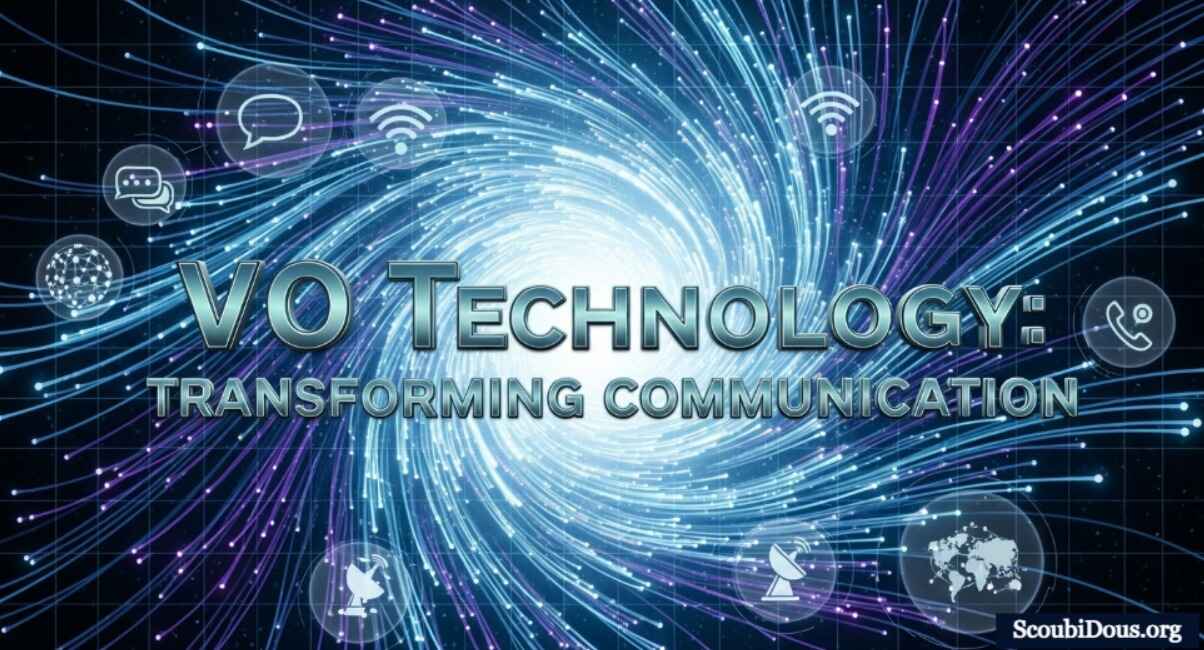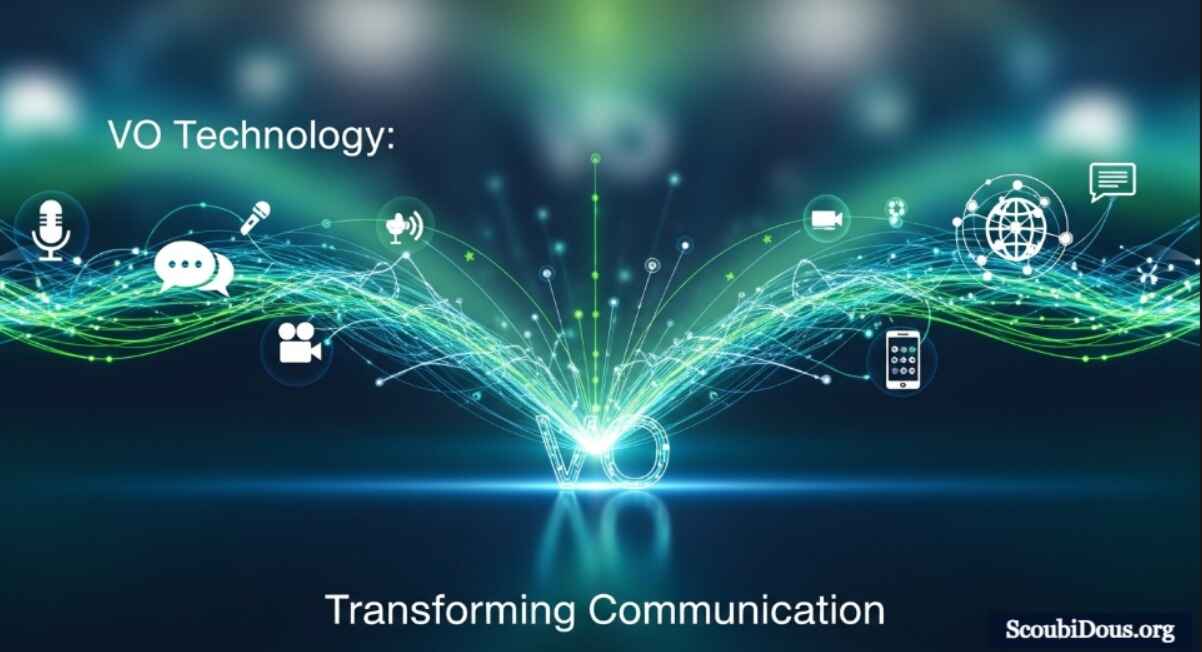Introduction
Technology is evolving at lightning speed, and one of the innovations making a significant impact across industries is VO technology.
From enhancing communication systems to streamlining operations, VO technology has become an essential part of the modern digital landscape. It combines the power of voice, data, and operational intelligence to help businesses stay connected, productive, and future-ready.
In this article, we’ll explore what VO technology is, how it works, why it matters, and how organizations can leverage it for long-term success.
What is VO Technology?

VO technology refers to a category of digital solutions that integrate Voice and Operations (VO) into communication and management systems. It enables seamless transmission of voice data over the internet and supports intelligent operational processes that improve efficiency.
In simpler terms, VO technology can be seen as the bridge between voice communication and digital transformation, powering tools like:
- Voice-over-Internet-Protocol (VoIP)
- Virtual operations platforms
- Intelligent assistants
- Unified communication systems
It goes beyond simple phone calls—combining cloud computing, artificial intelligence, and real-time data analytics.
The Core Components of VO Technology
VO technology isn’t just one tool; it’s a system made up of several integrated components:
1. Voice Communication Systems
- VoIP (Voice over Internet Protocol)
- Cloud-based call centers
- Voice-enabled applications
2. Operational Intelligence
- Real-time monitoring tools
- Workflow automation
- AI-powered insights
3. Cloud Infrastructure
- Storage for voice data
- Cloud PBX (Private Branch Exchange)
- Multi-device connectivity
4. Integration with AI & IoT
- Smart devices with voice activatio
- AI assistants for customer service
- Predictive analytic
How VO Technology Works
VO technology works by converting traditional voice signals into digital data packets. These packets are transmitted over the internet using advanced protocols and then reassembled into high-quality voice signals at the receiver’s end.
The process can be broken down into four steps:
- Signal Conversion – Voice is converted into digital signals.
- Data Transmission – Packets are transmitted over the network.
- Reassembly – Packets are combined back into voice signals.
- Integration – Voice data is combined with operational tools like dashboards, AI bots, and analytics systems.
This mechanism ensures smooth, cost-effective, and intelligent communication for both businesses and individuals.
Applications of VO Technology Across Industries

VO technology has wide-ranging applications in almost every sector:
1. Business Communication
- Video conferencing with voice integration
- Cloud-based customer service solutions
- Internal collaboration platforms
2. Healthcare
- Telemedicine voice consultations
- Remote patient monitoring
- Secure medical data sharing
3. Education
- Virtual classrooms with voice and video
- AI-powered learning assistants
- Voice-enabled learning tools
4. Retail & E-commerce
- Voice-enabled shopping assistants
- AI-driven customer support
- Omnichannel communication
5. Government & Public Services
- Emergency response communication
- Citizen helpline systems
- Virtual service centers
Benefits of VO Technology
VO technology brings measurable benefits to organizations and individuals alike:
- Cost Efficiency – Reduced expenses compared to traditional phone systems.
- Scalability – Easily grows with business needs.
- Flexibility – Works across devices and locations.
- Productivity – Boosts collaboration and workflow automation.
- Enhanced Customer Experience – Provides quick, intelligent, and personalized support.
- Future-Proofing – Prepares businesses for AI, IoT, and digital transformation.
VO Technology vs Traditional Communication
| Feature | Traditional Communication | VO Technology |
| Cost | High (hardware, call rates) | Low (internet-based) |
| Flexibility | Limited | High (multi-device) |
| Integration | Minimal | Advanced (AI, cloud, IoT) |
| Productivity Tools | Separate systems | Unified platform |
| Scalability | Hardware-dependent | Easy, cloud-based |
Challenges of VO Technology
While VO technology is revolutionary, it also comes with challenges that businesses must address:
- Internet Dependency – Requires stable, high-speed internet.
- Cybersecurity Risks – Potential vulnerabilities in data transfer.
- Initial Setup Costs – Investment needed for advanced systems.
- User Training – Employees need adaptation and training.
Future Trends in VO Technology
The future of VO technology looks promising with emerging innovations:
- AI-Driven Personalization – Smarter voice assistants and predictive support.
- 5G Integration – Faster, more reliable voice communication.
- IoT Expansion – Voice-enabled smart devices in homes and industries.
- AR/VR Communication – Immersive voice-powered virtual environments.
- Cybersecurity Enhancements – Advanced encryption for safer communication.
Actionable Insights for Businesses

If you’re considering adopting VO technology, here are some steps to ensure success:
- Assess Needs – Identify which areas need better communication and operations.
- Choose the Right Platform – Select a VO solution that aligns with your business size and goals.
- Train Teams – Provide employees with the tools and training to use VO technology effectively.
- Secure Your Systems – Implement firewalls, encryption, and cybersecurity practices.
- Scale Gradually – Start with core functions and expand with growth.
Conclusion
VO technology is more than just a communication tool—it’s a strategic enabler of digital transformation. By merging voice and operations into a seamless system, it helps businesses reduce costs, enhance productivity, and deliver better customer experiences.
As technology advances, VO technology will continue to evolve, becoming an integral part of industries from healthcare and education to retail and government. For organizations that want to stay ahead in the digital race, adopting VO technology is not just an option—it’s a necessity.


